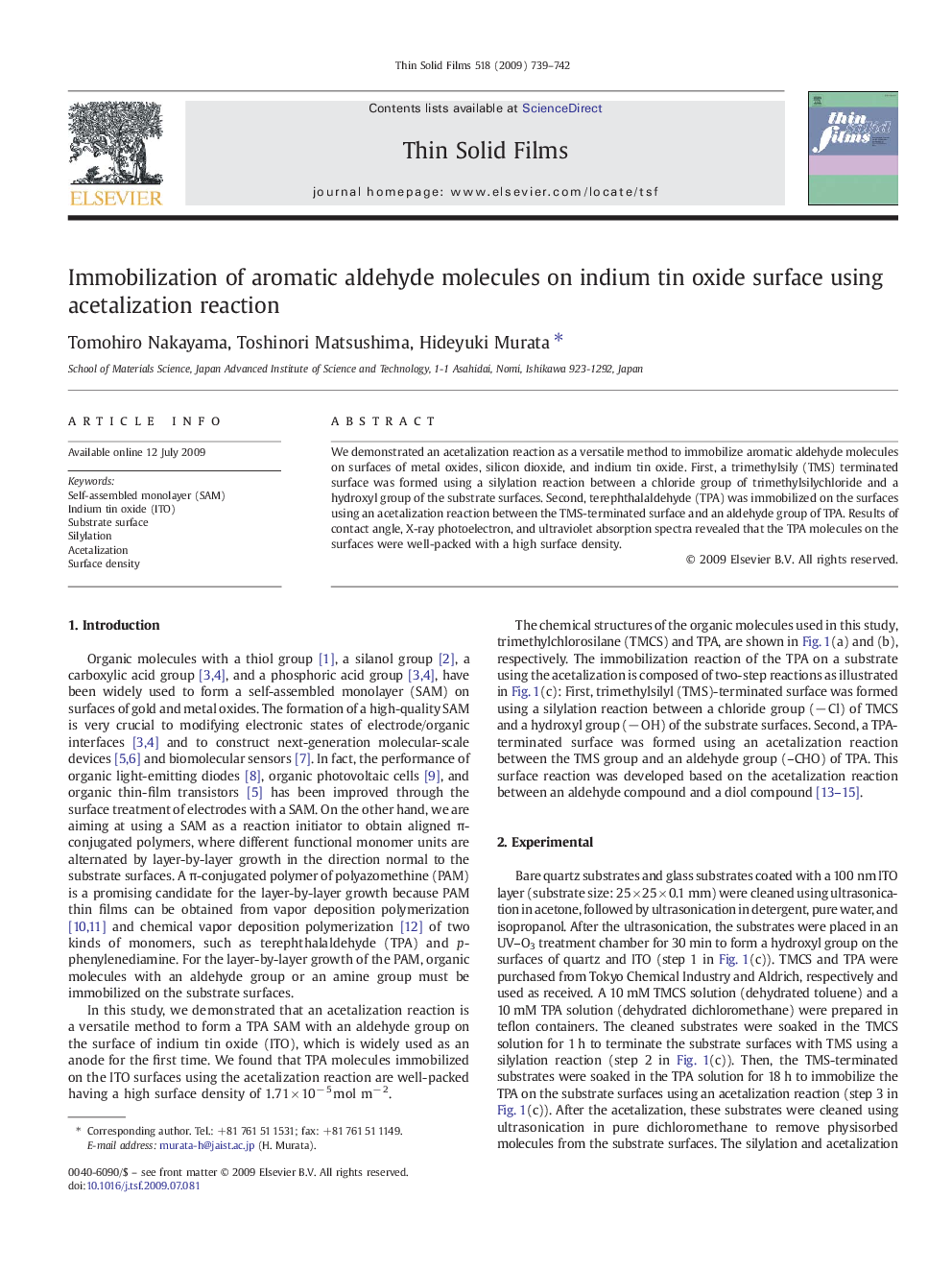| Article ID | Journal | Published Year | Pages | File Type |
|---|---|---|---|---|
| 1672204 | Thin Solid Films | 2009 | 4 Pages |
Abstract
We demonstrated an acetalization reaction as a versatile method to immobilize aromatic aldehyde molecules on surfaces of metal oxides, silicon dioxide, and indium tin oxide. First, a trimethylsily (TMS) terminated surface was formed using a silylation reaction between a chloride group of trimethylsilychloride and a hydroxyl group of the substrate surfaces. Second, terephthalaldehyde (TPA) was immobilized on the surfaces using an acetalization reaction between the TMS-terminated surface and an aldehyde group of TPA. Results of contact angle, X-ray photoelectron, and ultraviolet absorption spectra revealed that the TPA molecules on the surfaces were well-packed with a high surface density.
Keywords
Related Topics
Physical Sciences and Engineering
Materials Science
Nanotechnology
Authors
Tomohiro Nakayama, Toshinori Matsushima, Hideyuki Murata,
